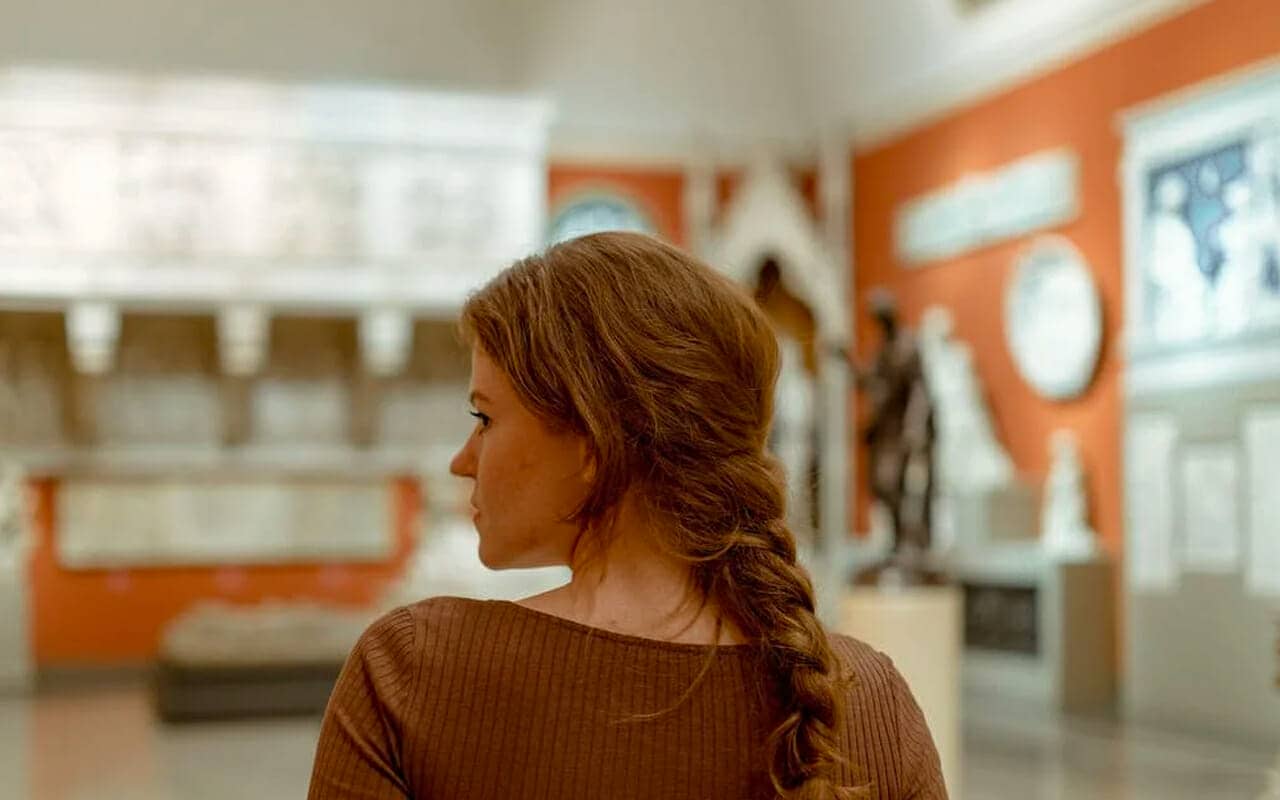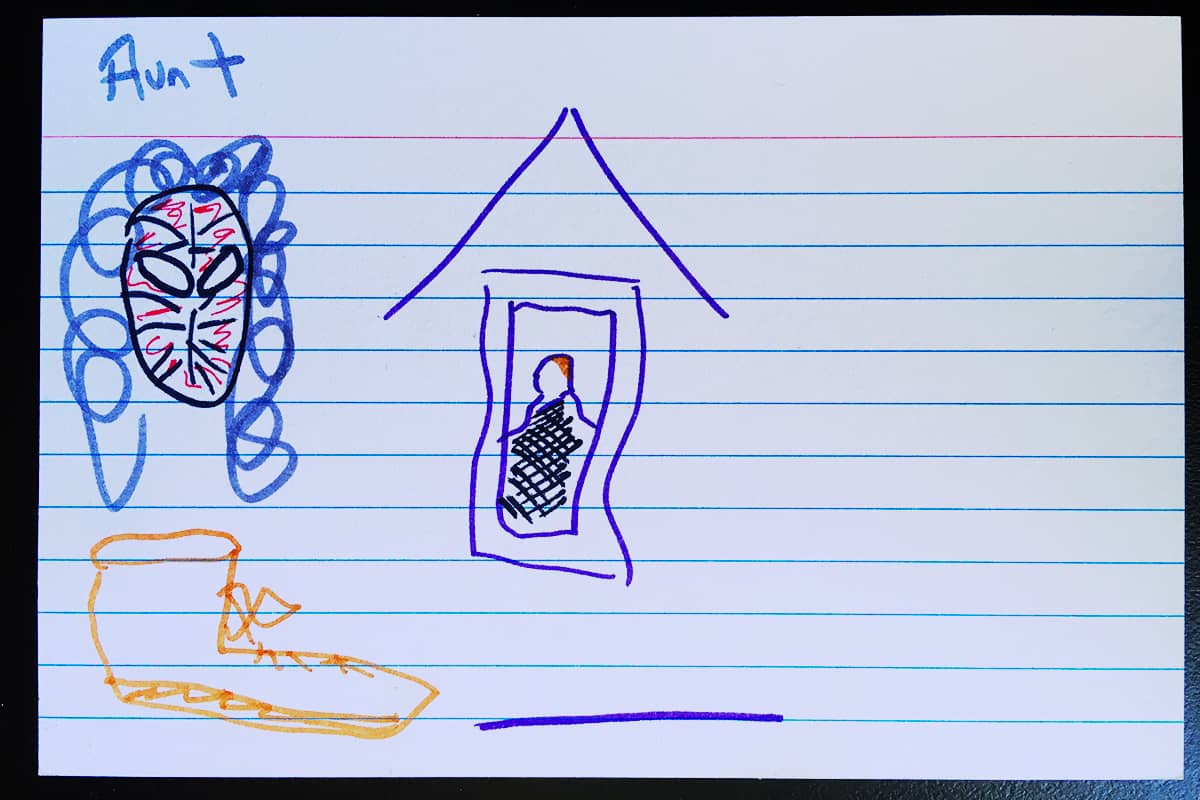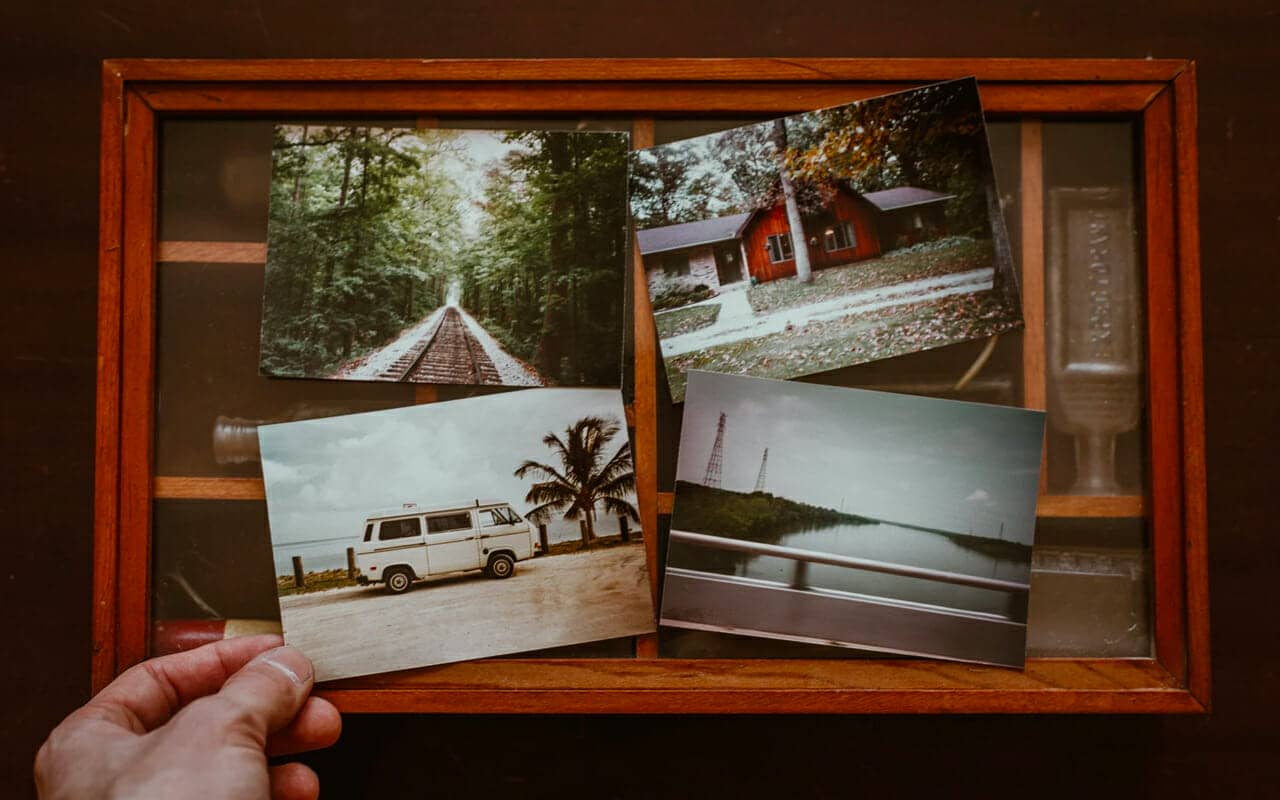Podcast: Download
Subscribe: Apple Podcasts | RSS

You can use mnemonic pictures for nearly everything:
- Language learning
- Info from textbooks
- Chemistry
- Math
- Names
- Facts
- Historical dates
- Lists
- Verbatim tasks like quotes and speeches
The trick is to assign your mnemonic images correctly.
Miss just one step, and the process can be slow, boring and not worth the time.
But learn to use mnemonic images well, and you’ll learn at a much faster pace.
Ready for the real deal when it comes to this powerful learning strategy?
Let’s dive in!
What Are Mnemonic Images?
Mnemonic images are associations.
For example, if I want to remember a name like “Bruce,” I might think of Bruce Wayne from Batman lore.
You attach a simple image like this to information you want to learn.
They can be simple and direct like Bruce Wayne, or more complex as needed. For larger learning projects, we typically place our associations in a Memory Palace.
You can also draw them out, which I often do to speed up the learning process. Here’s an example from one of my language learning missions:
This kind of visual mnemonic works because the answer isn’t on the card.
I’ve also left a blank area with no mnemonic image at all to tickle my memory and imagination in a growth-oriented way.
That way, the entire mnemonic image presents a puzzle to be solved.
And solving it makes memories form faster.
The Truth About Mnemonics
Frankly, there’s a bit of a problem in how we use this term “mnemonic image.”
You see, the idea of an image mnemonic makes it seem like the associations have to be visual.
But visual mnemonics are actually just one category of associations you can assign.
In the Magnetic Memory Method Masterclass, I teach you all the major categories of association through KAVE COGS:
- Kinaesthetic mnemonics
- Auditory mnemonics
- Visual mnemonics
- Emotional mnemonics
- Conceptual mnemonics
- Olfactory mnemonics
- Gustatory mnemonics
- Spatial mnemonics
Those are the major eight categories most of us draw upon the most often. But there are twenty more that I teach, and knowledge of these can be useful from time to time.
The point is this:
True Mnemonic Images Are Multisensory
Good mnemonic images are always multisensory. They don’t just rely on the visual mode.
So if you want to learn faster and remember more, visual mnemonics are okay. But you’ll do a lot better if you add in more mental imagery based on other sensations. In the Magnetic Memory Method world, we call the range of sensations we use the “Magnetic Modes.”
Why?
Because we know from personal experience and a variety of sources that multisensory association is the key to associative learning.
First, we have thirty years of memory competition records, and I’ve interviewed dozens of memory athletes like Nelson Dellis, Braden Adams, Lynne Kelly, Katie Kermode and John Graham to name just a few. I’ve also interviewed the creator of the World Memory Championships, Tony Buzan.
We know from studies that mnemonic processing works a lot better when it is multisensory. Studies have shown that multi sensory mnemonics can beat flash cards, for example. (I’ll show you a way you can combine mnemonic images with flash cards in a moment, however.)
Overall, multisensory association is a kind of “guided learning,” and this has been shown to be very healthy for adults. And you don’t have to be a memory competitor to benefit. People like myself, Scott Gosnell and John Michael Greer all produce materials for adult learners to help teach themselves this “martial art of the mind.”
With the evidence in tow, let me give you a few steps and some examples that will help you master using mnemonic images.
How to Use Visual Mnemonics to Remember Things
Keeping in mind that what we’re talking about is visualizing a wide range of sensations when assigning associations, here’s what to do and how to do it.
If you struggle to visualize, try these simple exercises. You can also learn to image stream or develop hyperphantasia.
Step One: Have the Target Information Prepared
I know this step sounds obvious, but it isn’t. Many people don’t spend any time at all thinking about what they want to memorize.
This causes issues later because mnemonic images are associations and they can blur into each other if they aren’t separated and arranged in optimal ways.
For example, when you’re memorizing a speech, you may want to memorize the quotes you use first. That’s how I approached my TEDx Talk.
When you’re memorizing foreign language vocabulary, you might want to organize the words by theme or even alphabetically.
Typically, you’ll want to follow the next step to avoid issues that emerge from poor information organization.
Step Two: Use a Memory Palace
You can definitely use mnemonic images without a Memory Palace. Some people prefer the story and link method.
However, here’s something to consider:
A Memory Palace is a mnemonic image. And it’s a powerful one because it allows you to use every other memory technique within it.

Any building you are basically familiar with can be used as a Memory Palace for storing your mnemonic imagery.
You also can use the Memory Palace to review your mnemonic images. Without this spatial memory foundation, it’s difficult to manage a bunch of associations floating around in the void of your mind.
Step Three: Select Your Mnemonic Images Skillfully
When learning, a lot of people make weak mnemonic images.
For example, if they are memorizing scripture, they might do something like this for “To answer before listening, that is folly and shame.”
They might use a mnemonic image of a tutu answering a bee-shaped telephone to get started.
That’s okay, but it’s also generic and vague.
To use the Magnetic Memory Method, you choose much more specific references. I would certainly stick with the tutu, but I would add Desmond Tutu.
Desmond Tutu wearing a tutu is a lot stronger than just the piece of clothing floating around on its own.
Then, with this image secured in a Memory Palace, I would add KAVE COGS. I would literally pretend to be Desmond Tutu and feel the tutu against my skin. I would hear him dancing around like a ballerina on his way to answer the bee-shaped phone.
And it would not be just any bee-shaped phone. It would be the character from The Bee Movie, voiced by Jerry Seinfeld.

Instead of using a generic mnemonic image, take things one step further. Find a specific version of that visual image. This reduces cognitive load when using the association to remember information.
These specific references make it easy to pack in sounds, emotions, physical sensations and elements of size, smells and tastes. It’s so much more powerful than visual mnemonics on their own.
Step Four: Review Your Mnemonic Images Strategically
With a Memory Palace in play, you’re able to gather together dozens, if not hundreds of mnemonic images. My TEDx Talk involved over 300, to give you a simple example.
(Though, please keep in mind that it’s not a numbers game. And there are different ways to count how many images are involved depending on your exact approach).
In my experience, the best way to review the associations is to follow the Memory Palace journey using dedicated patterns:
- Review them forwards
- Backwards
- From the middle of the Memory Palace to the end
- From the middle of the Memory Palace to the beginning
- Out of order
- Randomly pop in
This approach gives equal doses of Primacy and Recency to each mnemonic image in the Memory Palace.
Step Five: Experiment
I mentioned above that there’s a way to integrate flash cards. You can also use digital flash cards using an app like Anki.
The same rules apply.
When you create your card, either on paper or on a digital screen, make sure to use KAVE COGS.
And practice memorizing many different types of information. The images you use to memorize words will ultimately be linked to what you use for words. But knowing how, when and why to shift your mnemonic strategy is the key to long term success across the learning landscape.
Step Six: Develop
As you continue learning using mnemonic images, develop other systems.
There are three key systems that give you literally dozens of images you can draw from on demand.
These are:
Within 2-5 hours of developmental work, the piles of mnemonic images these systems give you will be ready to use in a flash.
For example, if I have to memorize an unfamiliar name like Gangador Dianand, I don’t have to create a mnemonic image from scratch. I just consult my pegword list for ideas.
If I have to memorize a number like 33924345, all I need is my 00-99 PAO, which has three images perfectly suited for those numbers. It’s ready to go, and all I had to do was develop it based on the Major System.
That’s all you’ll have to do too.
Beyond Mnemonic Pictures
Without a doubt, mnemonic images are fun and easy to develop and use.
The trick is to not treat them like “pictures” or limit them to the visual mode.
The more you broaden them into the multi-sensory capacities of your mind, the great memory power they will have.
And you can apply the KAVE COGS formula to your Memory palaces too.
Remember: Every Memory Palace is also a mnemonic image.
And it’s the best kind of mnemonic image because it is the one that lets you store all the rest.
If you need help building your first Memory Palace and want an entire network of them, register for this free course now:
It will help you develop them in an optimal way to house all of your mnemonic images from here on in. That way, you’ll remember a lot more, a lot faster.









